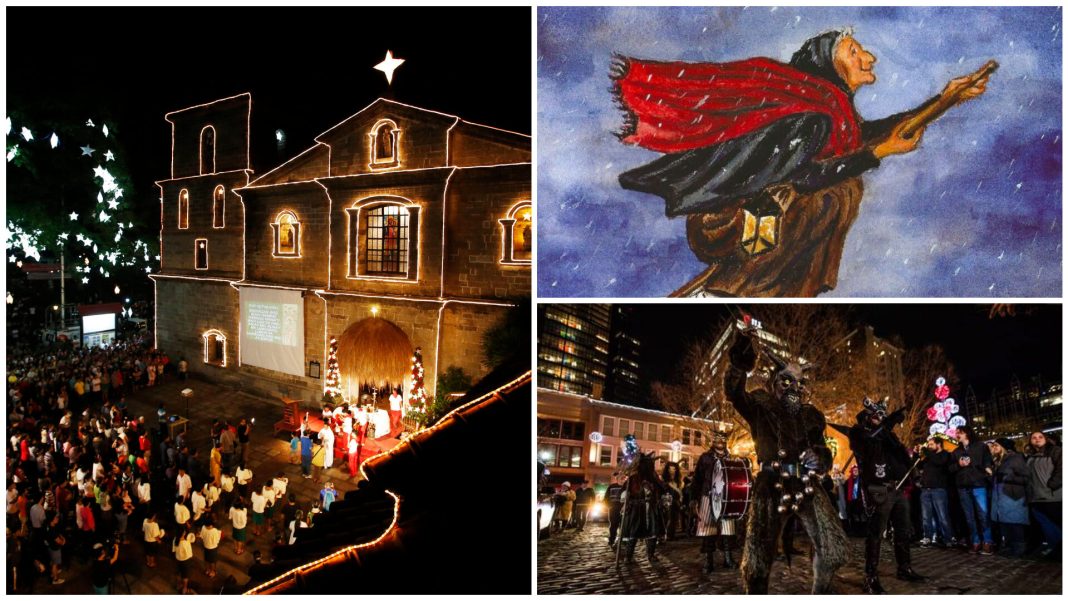Living where we do, we might have a very standardized view of Christmas. We don’t have ourselves to blame at the end of the day since we grew up where we grew up, and perhaps traveling during the holidays has never been an option either because of financial constraints, or the fact that Filipinos require family members to go home during the season.
However, it is nice and interesting to actually have a peek into other cultures’ practices of Christmas. Due to different religions, backgrounds, and traditions, different countries may have Christmas practices that can be relatively shocking to us, but the best part is always finding out why they do what they do, and ultimately respecting their chosen way of celebration.
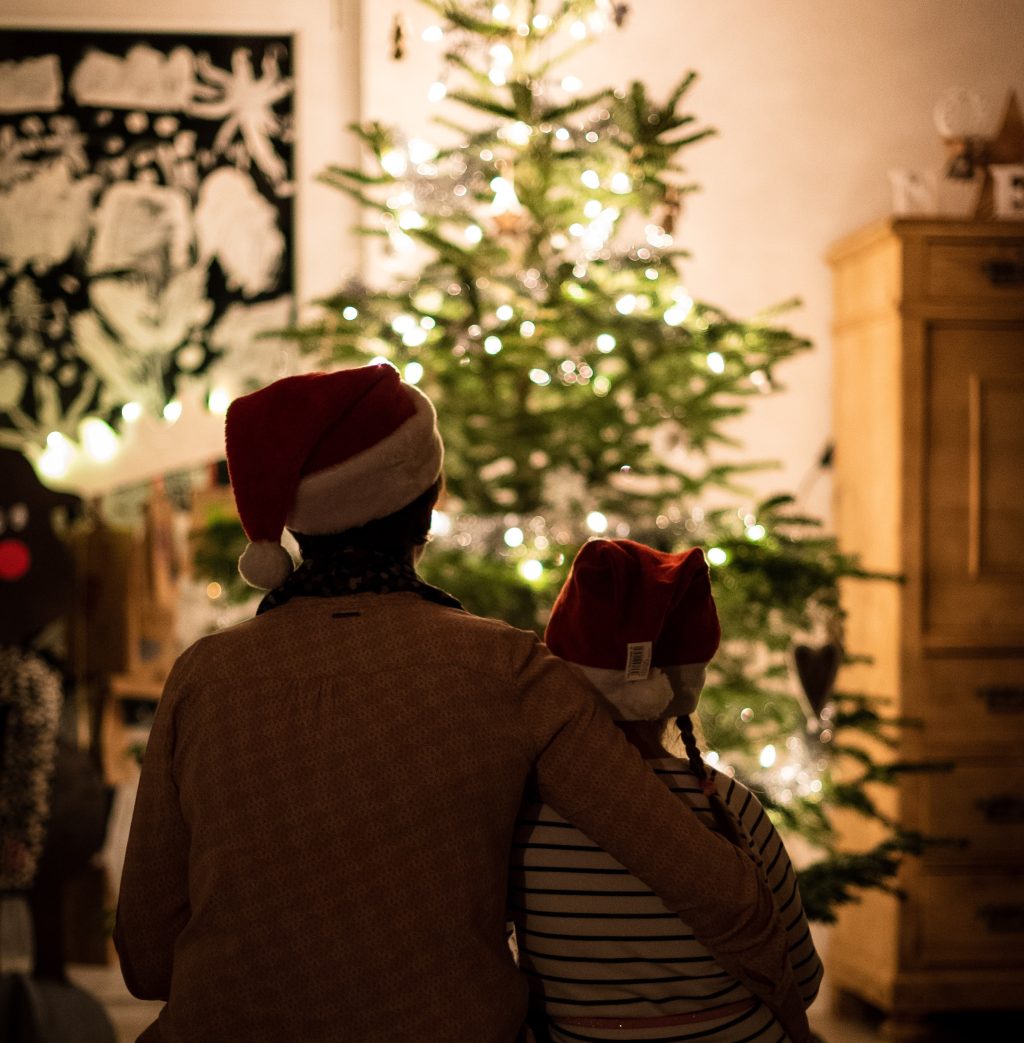
Here is how Christmas is celebrated around the world, particularly in the countries Italy, Austria, and the Philippines!
Italy
In the enchanting realm of Italian Christmas traditions, there’s a peculiar visitor who swaps the classic milk and cookies (apparent in Western culture on Christmas Eve for Santa Claus) for a more sophisticated pairing: wine and sausages. Meet La Befana, the wine-drinking witch who graces Italian households on the eve of the Epiphany, January 5th, twelve days after Santa Claus has made his rounds.
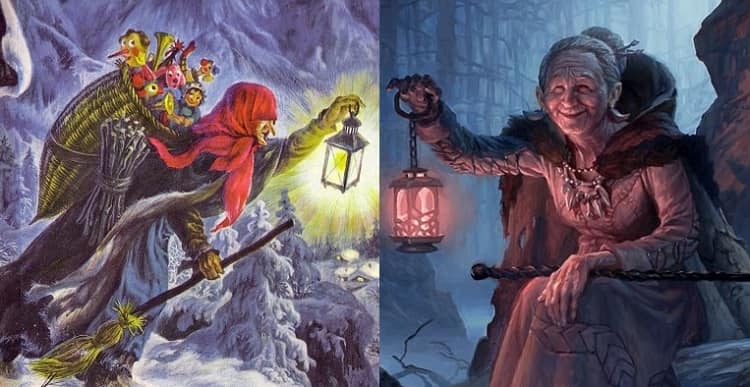
Unlike the stereotype of a drunk relative in a party, La Befana is a mythical figure in Italian folklore. The story goes that, centuries ago, when the Three Wise Men invited her to witness the birth of Christ, she declined the offer. Regretful and devastated for having missed the divine spectacle, she embarked on a quest to find the baby Jesus. And so, every Christmas season, she glides across the Italian landscape on her broomstick, carrying a sack of presents for the good children and, perhaps less appealingly, lumps of coal for the naughty ones.
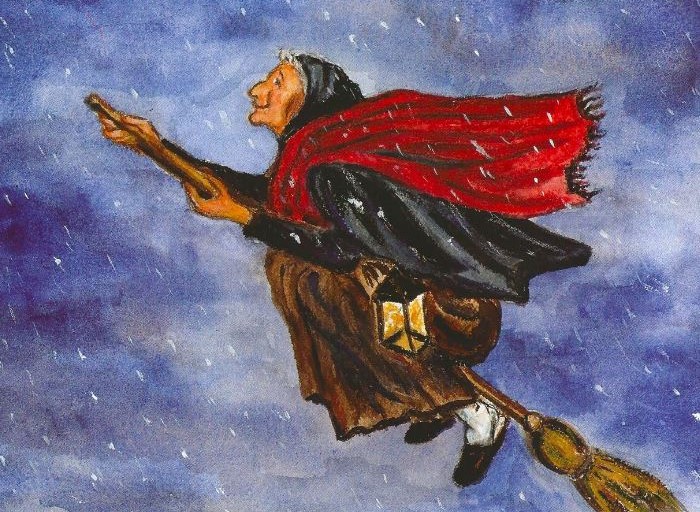
The act of leaving out a glass of wine and a plate of sausages for La Befana is a charming tradition that reflects the warmth of Italian hospitality. It’s a way for families to extend gratitude to this mythical visitor, who, despite her initial refusal to witness the birth of Christ, has become a beloved figure in the Christmas narrative. The choice of wine and sausages adds a touch of authenticity to the tradition, aligning with the rich culinary tapestry that is characteristic of Italy.
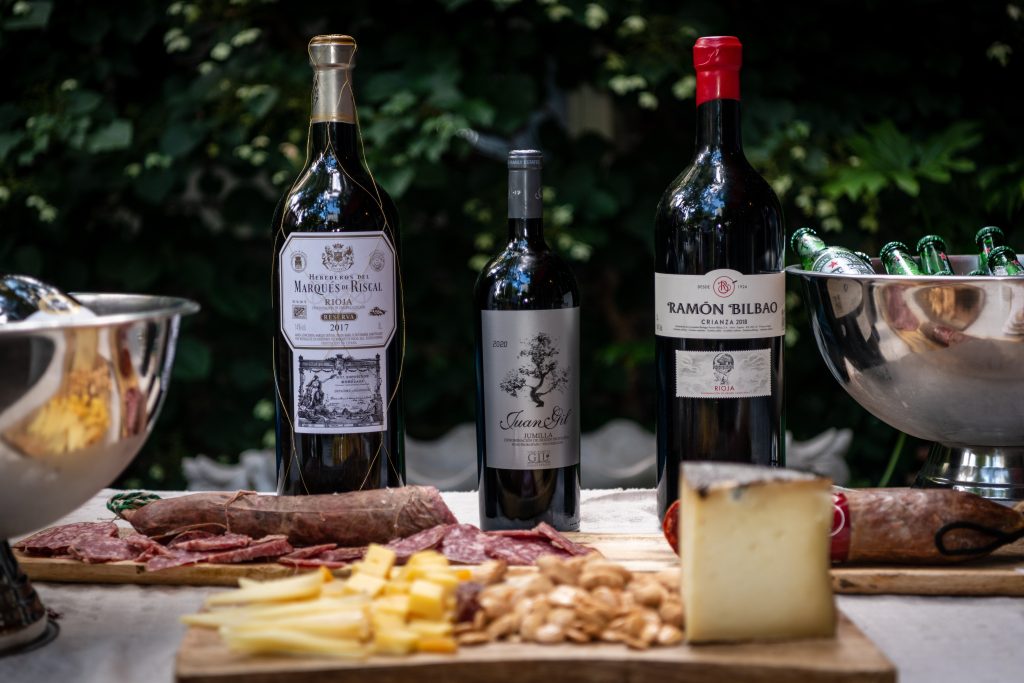
While the legend of La Befana might seem whimsical, it serves as a reminder of the diverse and intricate nature of Christmas folklore across the globe. Each country weaves its own tales and traditions into the festive season, creating a mosaic of customs that reflects the unique identity of its people.
Austria
In Austria, the Christmas season brings not only the anticipation of presents from St. Nicholas but also the fear of Krampus, a horned, hairy creature that haunts the nightmares of mischievous children. While the threat of receiving a lump of coal from La Befana might seem ominous to some, Austrian kids must contend with the terrifying prospect of Krampus, who serves as the eerie enforcer of Saint Nicholas.
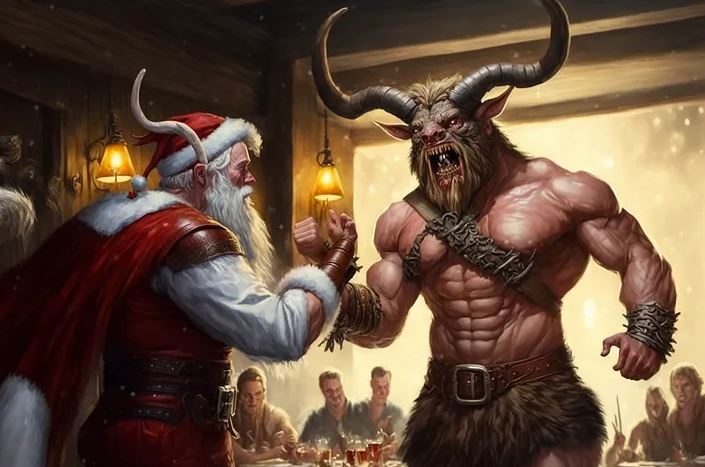
This unique Christmas tradition takes center stage on Krampusnacht, observed on December 5th in many Austrian towns, particularly in the alpine villages surrounding Salzburg and Tyrol. On this night, the streets come alive with the unsettling presence of dozens of men donned in frightening Krampus costumes. The half-goat, half-demon figures brandish sticks and parade through the streets, striking fear into the hearts of misbehaving children.
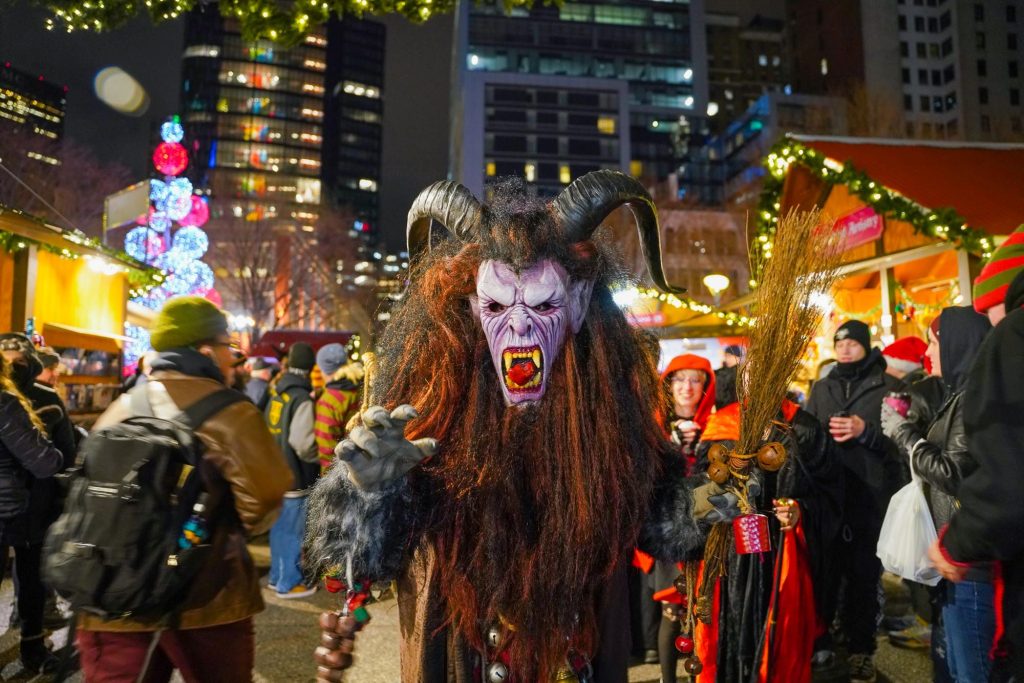
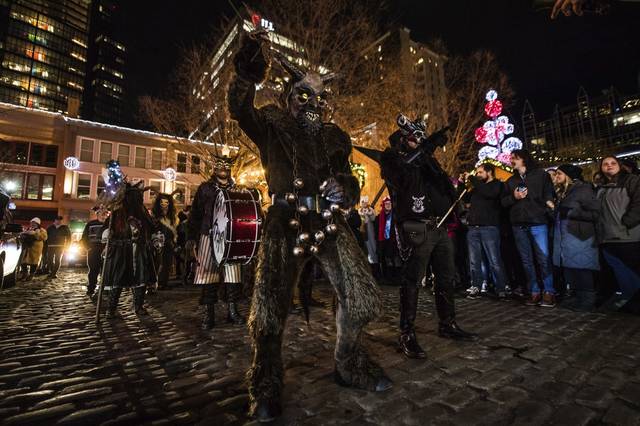
This practice is both a spectacle and a warning, as the Krampus symbolizes the consequences awaiting those who find themselves on Santa’s naughty list. Much more terrifying than simply not receiving a gift from Santa in exchange for bad behavior, if you ask me. It is a stark contrast to the more benevolent figure of St. Nicholas, emphasizing the dual nature of the Christmas season.
Philippines
There’s not much explaining to do here considering how you can already tell just by looking around you. But of course, our beautiful and beloved traditions are very much noteworthy. With our Spanish and Western influences, we can see the manifestation of these through our Christmas celebrations.
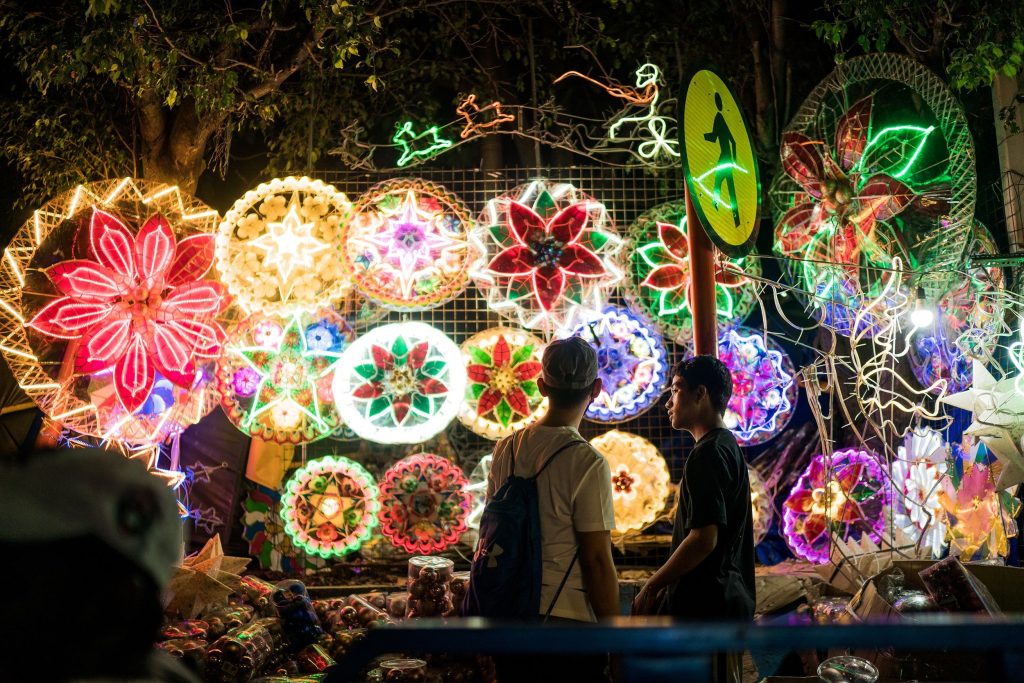
The religious aspect of Christmas is the most important in the Philippines due its close ties to Catholicism. This importance translates into a Philippine Christmas tradition called simbang gabi, wherein people gather into a devotional 9-day mass which occurs at dawn. It is said in Philippine folklore that if you complete nine full days in mass, you are granted one Christmas wish and it will come true.
Design-wise, the Spanish-Western fusion is also apparent, given the Santa Claus booths in malls and prints all over the place, as well as the belen which is a depiction of Christ’s birth in the manger with Mary and the Three Kings.
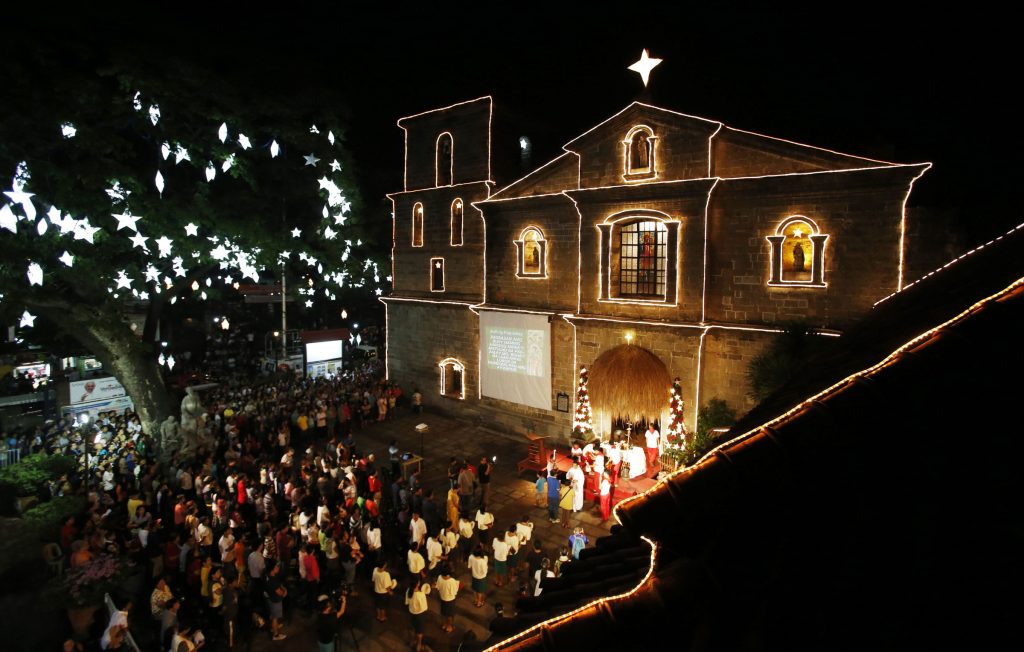
Due to the lack of chimneys in Filipino houses, the tradition of leaving cookies and milk for Santa Claus isn’t really practiced, but a lot of Filipino children still do believe in the legend, and best believe, any household already is bejeweled as early as September in the Philippines.

So, as families set out their glasses of wine and sausages, put on half-goat half-demon costumes, or wake up at 4 am to prepare for a mass, they all not only participate in a charming ritual but also contribute to the rich narrative of Christmas celebrations at large. Each culture in locations all around the world has their own distinctive flair to the season’s festivities, blending folklore, tradition, and just plain celebration of the highly-anticipated holiday. Wherever you are, have a merry, merry Christmas!

